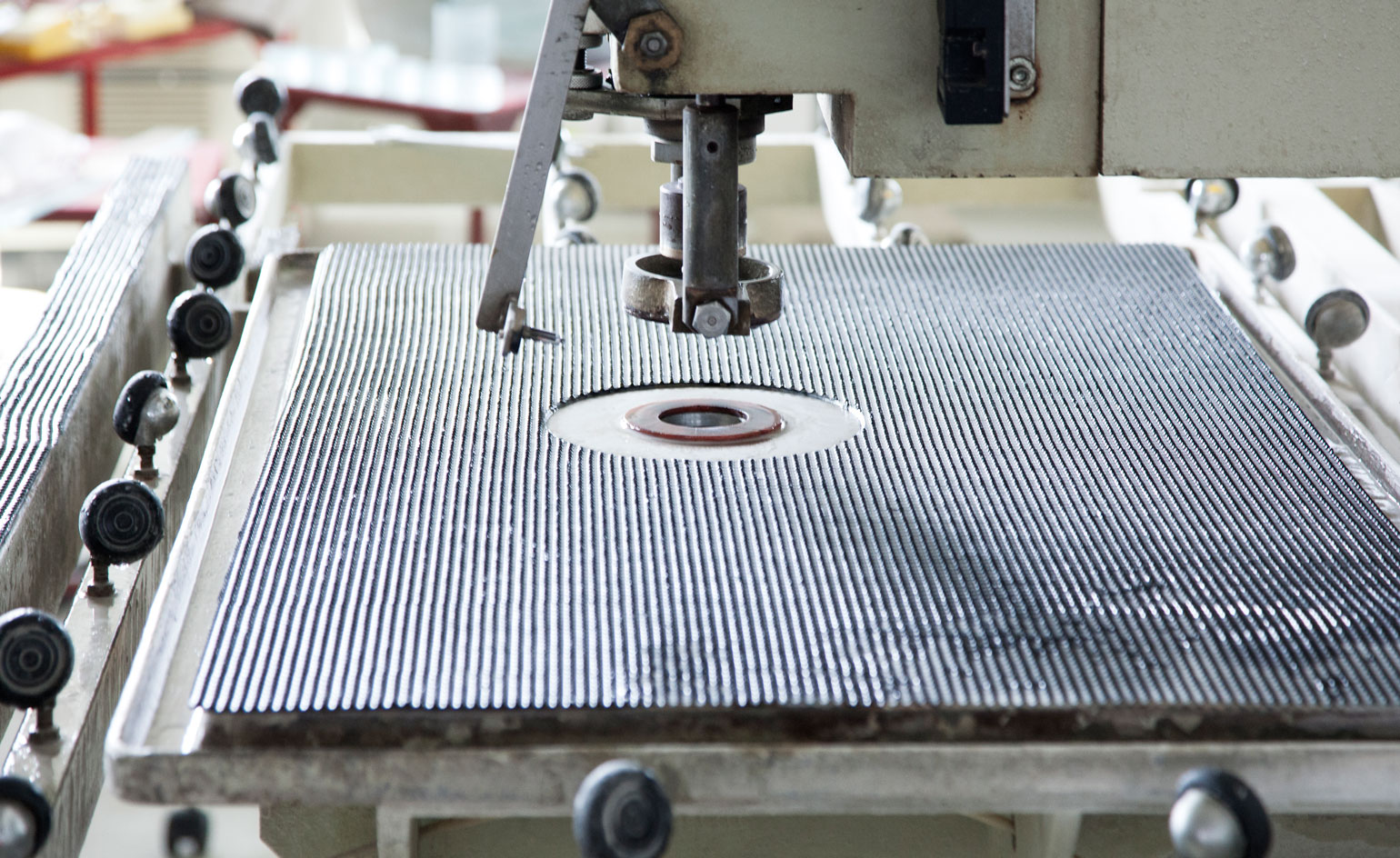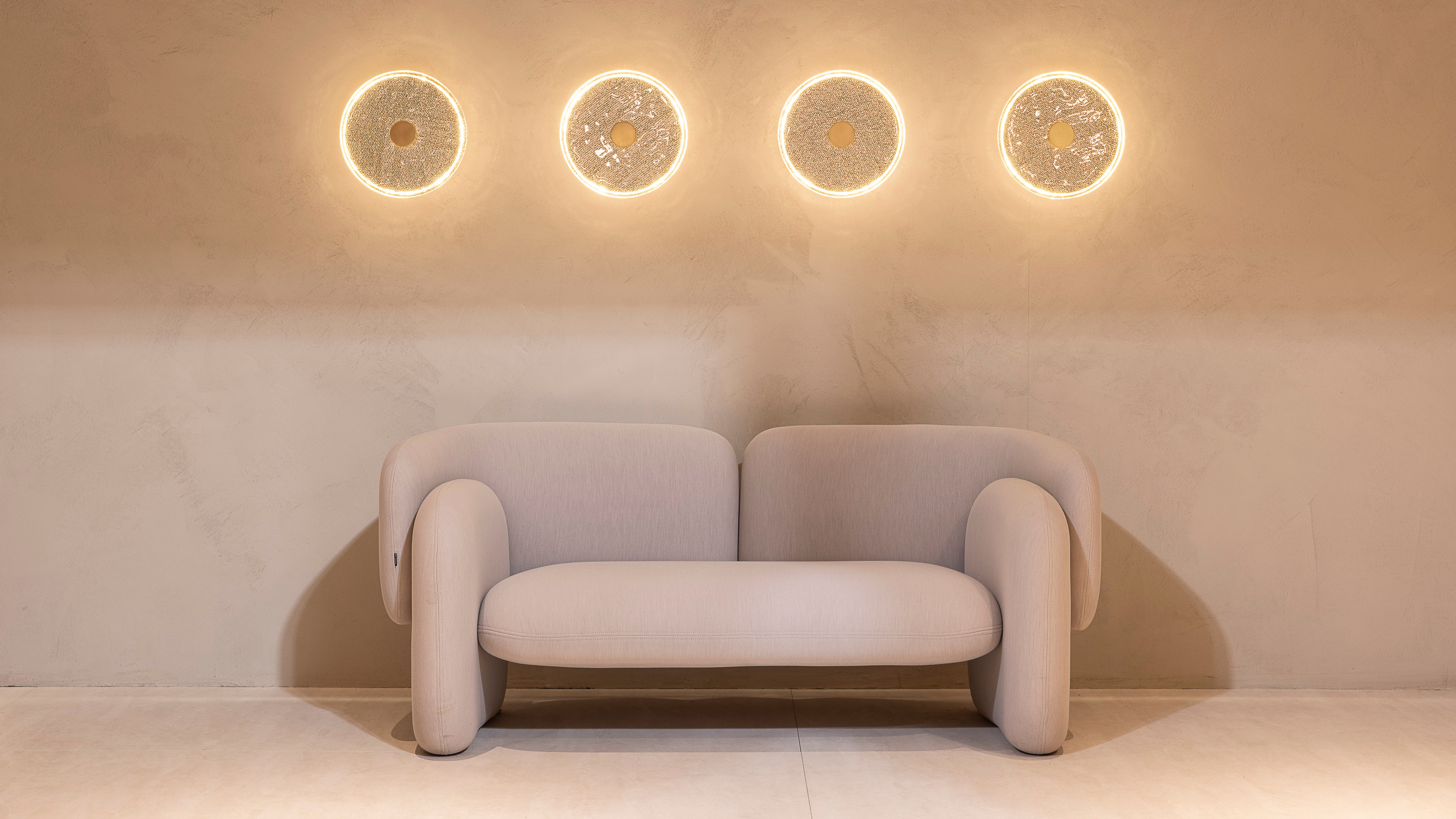Splinter cell: the making of John Hogan and Lasvit’s ‘Field’ chandelier

Born and raised in Toledo, Ohio, the home of America’s studio glass movement, John Hogan started blowing glass in high school when he was just 15 years old, but says he still has much to learn. ‘I’m always experimenting and trying to push myself in new directions,’ says the Seattle-based designer, who is known for his captivating glassworks that play with colour and light. ‘I think that ten lifetimes wouldn’t be enough to really explore the boundaries of this material and the endless potential of using light. I feel like I’m just at the beginning of becoming an expert.’ This insatiable thirst for knowledge explains why, when invited to create a light for Hotel Wallpaper*, Hogan seized on the opportunity of creating something on a scale he had not tackled before.
‘I wanted to stretch myself a little bit and make something that was totally new for me, and hopefully new for lighting design as well,’ says Hogan of his spectacular ‘Field’ chandelier, which was created in close collaboration with Czech glass brand Lasvit. Having met the brand during a sojourn in the Czech Republic three years ago, Hogan knew of the studio’s capabilities and had wanted to work with them ever since.
The design for the ‘Field’ chandelier followed an intense period of research into polarising foil – optical films that allow light oscillations to be shifted from 360 degrees into one direction. ‘It’s something I knew nothing about before I started the project,’ confesses Hogan, who set about sourcing as many different types of polarisers as he could lay his hands on in Seattle. ‘There are several different types – linear, circular, quarter waves. I feel like I know a little bit about it now, but you have to have a degree in physics to really dive in.’
He began a series of complex experiments that led him to a simple solution. Instead of using multiple foils, Hogan found that the most fruitful results came when he created compositions using just linear polarisers.
By applying the foil to panes of glass placed perpendicular to each other and suspended at three different levels, Hogan created a chandelier that splits the light waves as they shine through the glass from above, causing different colours to appear as the viewer moves around it. In contrast to Hogan’s previous projects that have seen him work with dichroic and iridescent glass, where the colour is inherent in the material, the ‘Field’ chandelier is the first time Hogan has created colour through filtration.
‘The idea was to try to make a chandelier that taught the viewer something about the way that light acts,’ says Hogan, who worked with a small team of craftsmen at Lasvit to bring his Seattle-made prototype to life on a much larger scale. Working within a three-month window, the planes of glass were water jet-cut, polished, drilled, coated with the polarisers and then suspended from the ceiling on polished metal rods. The result is a mesmerising piece of light sculpture that offers its viewers a lesson in the physics of light. ‘There are about eight different colours that you can see,’ says Hogan. ‘And they all change as you move around the piece. Then when it’s turned off, it turns grey. Like all of my work, it’s about paring things down and trying to bring people’s attention to the beauty of light.’
As originally featured in the August 2016 issue of Wallpaper* (W*208)
Receive our daily digest of inspiration, escapism and design stories from around the world direct to your inbox.

See more from Handmade here and check in to Hotel Wallpaper*…

‘I wanted to stretch myself a little bit and make something that was totally new for me, and hopefully new for lighting design as well,’ says Hogan

Hogan’s chandelier was constructed by applying polarising foil to panes of water-jet-cut glass, placed perpendicular to each other in three tiers and suspended from the ceiling on polished metal rods

The design for the ‘Field’ chandelier followed an intense period of research into polarising foil – optical films that allow light oscillations to be shifted from 360 degrees into one direction

Hogan created a chandelier that splits the light waves as they shine through the glass from above, causing different colours to appear as the viewer moves around it

In contrast to Hogan’s previous projects that have seen him work with dichroic and iridescent glass, where the colour is inherent in the material, the ‘Field’ chandelier is the first time Hogan has created colour through filtration
INFORMATION
For more information visit John Hogan’s website and Lasvit’s website
Photography: Jakub Skokan
Ali Morris is a UK-based editor, writer and creative consultant specialising in design, interiors and architecture. In her 16 years as a design writer, Ali has travelled the world, crafting articles about creative projects, products, places and people for titles such as Dezeen, Wallpaper* and Kinfolk.
-
 Curvilinear futurism meets subtropical beaches at Not A Hotel’s ZHA-designed Okinawa retreat
Curvilinear futurism meets subtropical beaches at Not A Hotel’s ZHA-designed Okinawa retreatZaha Hadid Architects has revealed the design for the first property in Not A Hotel’s futuristic new Vertex collection, coming soon to southern Japan
-
 Gorden Wagener leaves the helm of Mercedes-Benz design after 28 years with the company
Gorden Wagener leaves the helm of Mercedes-Benz design after 28 years with the companyThe German designer is stepping down from the role of chief design officer at Mercedes-Benz. We look back at his influence and impact on the world of automotive and luxury design
-
 These Christmas cards sent by 20th-century architects tell their own stories
These Christmas cards sent by 20th-century architects tell their own storiesHandcrafted holiday greetings reveal the personal side of architecture and design legends such as Charles and Ray Eames, Frank Lloyd Wright and Ludwig Mies van der Rohe
-
 Sophie Lou Jacobsen’s glass tableware is fit for a hotel-style breakfast at home
Sophie Lou Jacobsen’s glass tableware is fit for a hotel-style breakfast at homeThe French-American designer unveils her ‘Continental Collection’, a playful and elegant take on classic breakfast tableware
-
 Lasvit brought forest, fabric and frozen light to Euroluce 2025
Lasvit brought forest, fabric and frozen light to Euroluce 2025Czech glassmaker Lasvit’s 2025 lighting launches look to nature for inspiration and reflection
-
 Best new lighting designs to brighten up your space
Best new lighting designs to brighten up your spaceFrom ruby red pendants to sculptural table lights, we bring you the brightest moments from the latest in lighting design
-
Glassware sets for every occasion
Our edit of contemporary glassware sets, from everyday kitchen glassware to dinner party-appropriate wine and cocktail glasses, by the best designers and makers
-
 Lauren Manoogian rocks on with earthy glassware collaboration
Lauren Manoogian rocks on with earthy glassware collaborationBrooklyn-based slow fashion-focused designer Lauren Manoogian has teamed up with Paris maker Lætitia Jacquetton on a series of vases created from glass blown around rocks
-
 Ann Demeulemeester’s first foray into homeware ‘returns to the essence of things’
Ann Demeulemeester’s first foray into homeware ‘returns to the essence of things’The Belgian fashion designer collaborates with Serax for a collection launching at Maison et Objet this week
-
 Rethinking the anatomy of crystal glassware with Nigel Peake and J. Hill’s Standard
Rethinking the anatomy of crystal glassware with Nigel Peake and J. Hill’s Standard -
 Kitchen by Gitta Gschwendtner and Schiffini
Kitchen by Gitta Gschwendtner and Schiffini